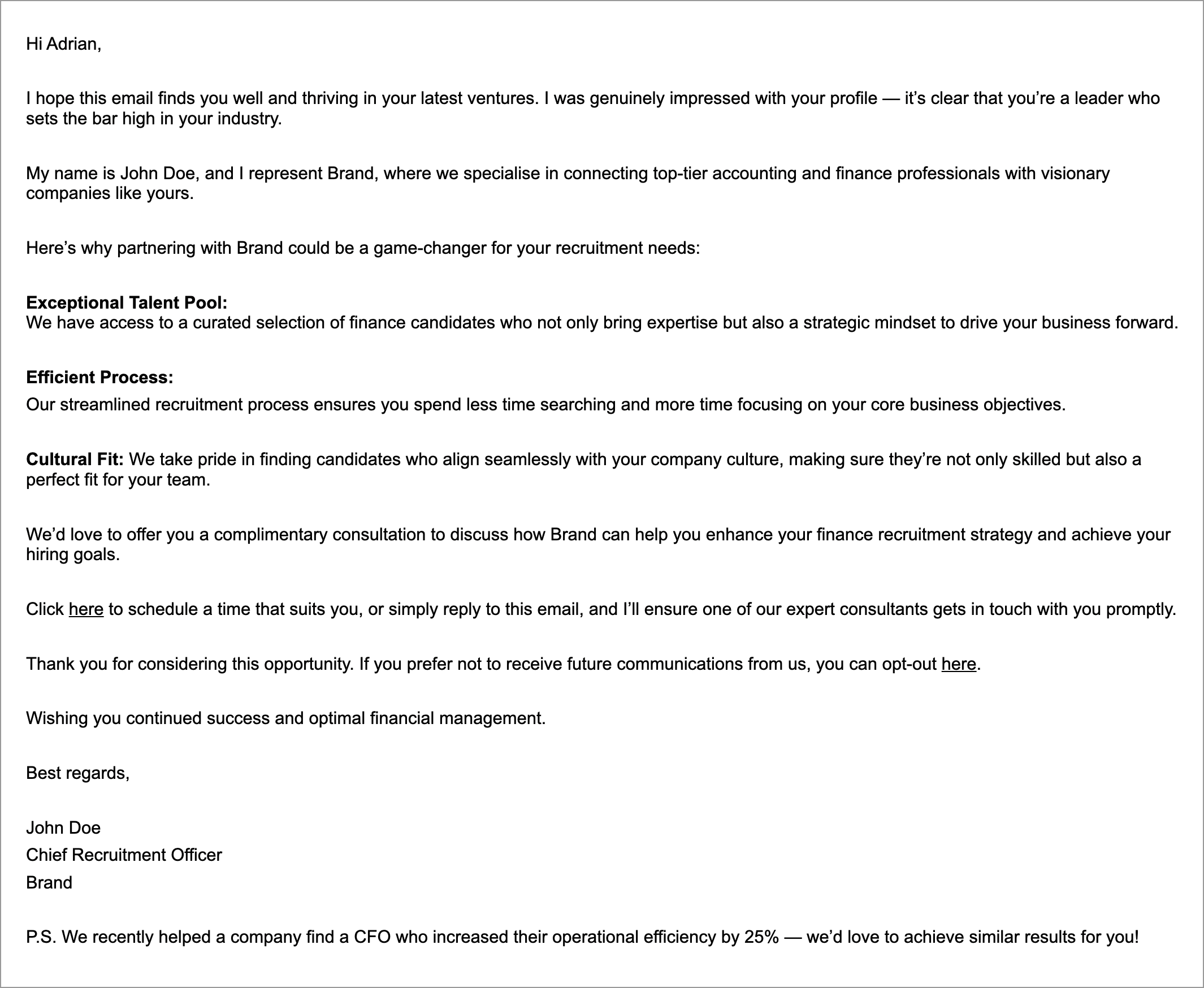Do you have a business email address? Then you probably receive cold emails. On a daily basis.
Let’s define what a cold email is. To quote from Wikipedia: “a cold email is an unsolicited e-mail that is sent to a receiver without prior contact.” Some people might call that breaking the ice. Others might use a less desirable term: spam.
Dear person, buy my thing
Here are some of the products and services offered to me in cold emails lately:
- Thing I don’t need
- Thing I don’t need
- Thing I don’t need
- Thing I don’t need
- Thing I don’t need
- Thing I don’t need
- Golf packages
The last one sticks in my mind because somehow the seller is always down to their last few spots. It’s like a parody of FOMO. Final, final, final, final, FINAL chance!
The recurring theme is irrelevance. My first name is the only aspect of personalisation, and by God will they use it liberally throughout the email. Because seeing your name plucked from a database, mail merge-style really builds rapport, right?
Tone deaf
Wording in cold emails varies wildly. Many are faux-chummy (“Hey, Adrian!”). Some are sycophantic. Sometimes there are jokes, sometimes they’re deadly serious.
But here’s the thing – for me, a very experienced cold email recipient, there is no magic combination of words that will make any difference.
Do they ever work?
The law of averages says yes. Even actual spam emails will get a bite every now and then, making the sender’s efforts worthwhile. But spammers don’t have a reputation to maintain.
For cold emailers, someone out there will just so happen to be looking for promotional mugs at that moment in time, and be willing to consider buying from a brand that popped unexpectedly into their inbox.
Stats say that cold emails hover around an 8.5% response rate. What the stats don’t reveal is how many of those responses say **** off.
Unicorn tattoo
I wouldn’t be arrested if I got a unicorn tattooed on my forehead, but it might be a hindrance in the workplace and adult life in general. Just because something is legal doesn’t necessarily mean that it’s a good idea.
I recently looked up reviews for a particularly persistent cold emailer. On both Google and TrustPilot, the score was rock bottom as a direct result of their cold emailing practices. While they surely hit the target every now and then, there’s a lot of damage being done around it.
Tarred with the same brush
I’ve been pretty harsh on cold emailing and it’s clear as day which side of the fence I sit on. But in the interests of fairness, I should mention that some cold emailers put in the work and follow the rules, while others are far more unscrupulous. Some are legitimate companies and some are scammers, pure and simple.
And therein lies the problem – I am not going to take the time to discern which is which. I am absolutely not ever going to risk pressing an ‘unsubscribe’ link on an unsolicited email. Everyone gets marked as a spammer, and ignored.
Opposing views
Cold emailing has its proponents and detractors. A lot of the advice for effective cold emailing is the same as for email marketing in general. Segment properly. Personalise the content. Run A/B tests.
To those cold emailers that put in the effort and get results, good for you. For real. Being impartial for a moment, cold emailing certainly appears to work to some degree despite its questionable reputation. But for me, personally speaking, the instinctive reaction will always be cold shoulder.



